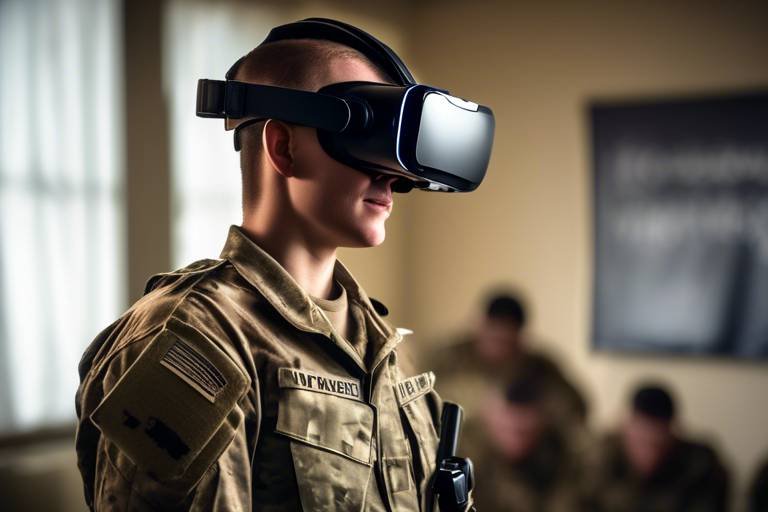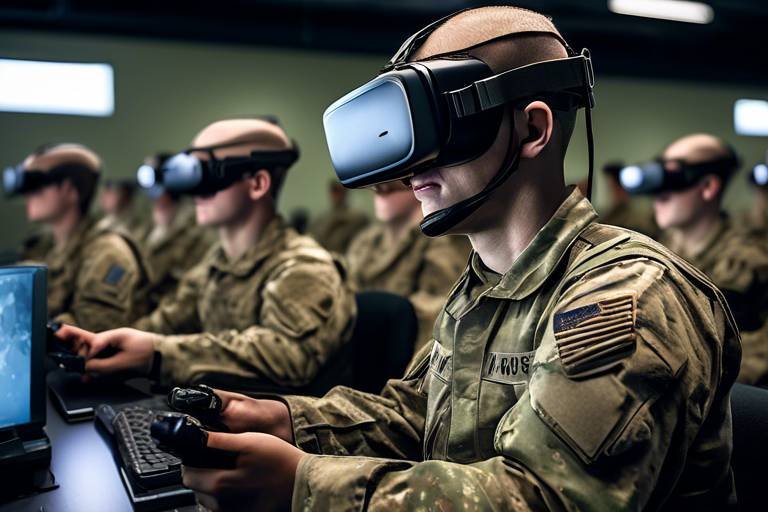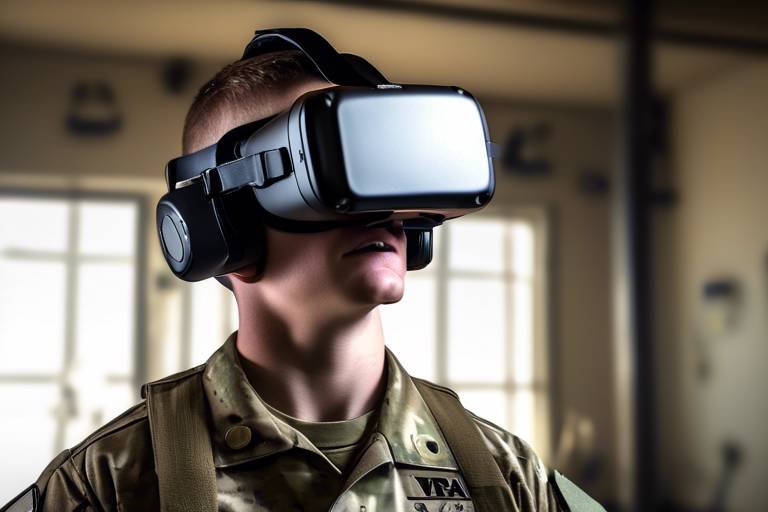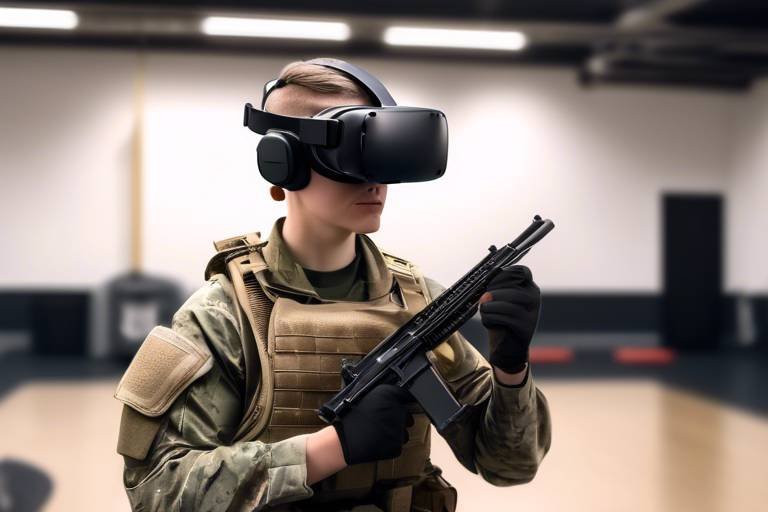The Role of VR in Developing Operational Planning Skills
In today's fast-paced world, the ability to make quick, informed decisions is more crucial than ever. Organizations are constantly seeking innovative ways to enhance their operational planning skills, and that's where Virtual Reality (VR) steps in. Imagine stepping into a fully immersive environment where you can practice planning strategies without any real-world repercussions. Sounds exciting, right? VR isn't just a tool for gaming anymore; it's a transformative technology that can revolutionize how we approach operational planning.
So, what exactly is operational planning? At its core, it involves outlining the necessary steps to achieve an organization's strategic goals. It’s like crafting a roadmap that guides teams toward success. However, understanding the nuances of operational planning can be challenging. This is where VR shines. By simulating real-world scenarios in a virtual space, VR allows individuals to grasp complex concepts more effectively. It’s akin to learning how to ride a bike: you can read all about it, but until you actually get on and pedal, the theory remains just that—theory.
As we dive deeper into the benefits of VR in developing operational planning skills, we can’t overlook how it enhances engagement. Traditional training methods can often feel dry and uninspiring. However, VR captivates users with its immersive experiences, making learning not just informative but also enjoyable. When learners are engaged, they are more likely to retain information and apply it effectively in real-world situations. Imagine being able to walk through a virtual warehouse, strategizing logistics in real-time, and collaborating with teammates—all while receiving instant feedback on your decisions. This is the future of training, and it’s already here.
Moreover, VR provides a unique opportunity for practical learning. Participants can practice in realistic scenarios without the fear of making mistakes that could impact their organization. For instance, in a virtual environment, a team could simulate a crisis situation, allowing them to test their operational plans under pressure. This hands-on experience not only boosts confidence but also enhances critical thinking skills. It’s like playing a high-stakes game where every decision counts, but the stakes are purely educational.
Another significant advantage of VR is the ability to receive real-time feedback. In traditional training settings, feedback can often be delayed or vague. However, in a VR environment, learners can see the immediate consequences of their actions, allowing them to adjust their strategies on the fly. This dynamic feedback loop fosters a deeper understanding of operational planning concepts and helps develop quick decision-making skills. It’s like having a personal coach who guides you through every step, ensuring you learn and grow with each experience.
Collaboration is another area where VR excels. In many organizations, operational planning requires teamwork and effective communication. VR facilitates collaborative training sessions, enabling team members to work together in virtual spaces. This not only enhances their planning skills but also strengthens their ability to communicate and coordinate with one another. Think of it as a virtual roundtable where everyone can share their ideas and strategies in real-time, leading to more comprehensive and well-rounded operational plans.
As we explore the role of VR in operational planning further, we will also look at real-world case studies that illustrate its successful implementation. Various industries are already reaping the benefits of VR training, and these examples serve as a testament to its effectiveness. However, it’s important to acknowledge that while VR offers numerous advantages, it also comes with its own set of challenges and limitations. Organizations must carefully consider these factors when integrating VR into their training programs.
In conclusion, the integration of Virtual Reality into operational planning training is not just a trend; it’s a revolution. By creating immersive, engaging, and realistic training environments, VR is redefining how individuals and teams develop essential planning skills. As we continue to embrace this technology, the possibilities for enhancing operational planning are truly limitless.
- What is operational planning?
Operational planning is the process of outlining the steps necessary to achieve an organization's strategic goals. - How does VR enhance training?
VR enhances training by providing immersive experiences that improve engagement, retention, and practical learning. - Can VR simulate real-world scenarios?
Yes, VR can create realistic scenarios where individuals can practice decision-making without real-world consequences. - What industries benefit from VR training?
Industries such as healthcare, logistics, and manufacturing are utilizing VR for operational planning training. - Are there challenges with VR training?
Yes, while VR training has many benefits, it also presents challenges such as cost, technology limitations, and the need for proper implementation strategies.

Understanding Operational Planning
Operational planning is the backbone of any successful organization, acting as a roadmap that guides teams towards their strategic goals. Think of it as the detailed itinerary for a road trip; without it, you might find yourself lost or heading in the wrong direction. This planning process involves outlining specific steps, allocating resources, and defining timelines, ensuring that everyone is on the same page and working towards a common objective. It's not just about having a plan; it's about having a well-structured plan that can adapt to changing circumstances.
In today’s fast-paced business environment, the importance of operational planning cannot be overstated. It provides clarity and direction, helping organizations to efficiently utilize their resources and minimize waste. Moreover, effective operational planning enables teams to anticipate potential challenges and develop contingency strategies. This proactive approach not only enhances productivity but also fosters a culture of accountability within the organization.
Now, how does virtual reality (VR) come into play in this context? Well, VR can significantly enhance the understanding and execution of operational planning by providing immersive training experiences. Imagine being able to step into a virtual world where you can practice your planning skills in realistic scenarios without any real-world consequences. This kind of hands-on experience is invaluable. For instance, VR allows employees to simulate various operational scenarios, giving them the chance to experiment with different strategies and see the outcomes in real-time. This not only deepens their understanding of operational planning but also builds their confidence in making decisions.
Furthermore, VR can facilitate better comprehension of complex concepts by visualizing data and processes that are often challenging to grasp through traditional training methods. For example, organizations can use VR to create interactive models of their operations, allowing team members to explore and manipulate these models to see how changes in one area can impact the entire operation. This kind of visual learning can be particularly beneficial for those who struggle with abstract concepts.
In summary, operational planning is essential for achieving strategic goals, and integrating VR into this process can enhance understanding and execution. As organizations continue to evolve, leveraging innovative technologies like VR will be crucial in developing the skills necessary for effective operational planning. By embracing these advancements, businesses can not only improve their planning processes but also empower their teams to perform at their best.

The Benefits of VR in Training
Virtual reality (VR) is revolutionizing how we approach training, particularly in operational planning. Imagine stepping into a fully immersive environment where you can practice real-world scenarios without the fear of making mistakes. This is one of the most significant advantages of VR—it provides a safe space for learners to explore, experiment, and grow. By simulating complex situations, VR enhances engagement and retention, making the learning process not just effective but also enjoyable.
One of the standout benefits of VR is its ability to create immersive experiences. Traditional training methods often rely on passive learning, where participants absorb information without much interaction. In contrast, VR puts learners at the center of the action, allowing them to actively participate in their training. This level of engagement leads to a deeper understanding of operational planning concepts, as learners can visualize and manipulate variables in real-time.
Furthermore, VR training allows for realistic scenarios that mimic the challenges faced in actual operational environments. For instance, a logistics company can create a VR simulation that replicates the complexities of supply chain management. Trainees can navigate through potential disruptions, make decisions, and see the immediate consequences of their actions—all within a controlled setting. This practical learning approach not only builds confidence but also sharpens critical thinking and decision-making skills.
Another compelling advantage of VR is the real-time feedback it offers. In traditional training, feedback may come days or weeks later, making it difficult for learners to connect their actions with outcomes. However, in a VR environment, learners receive instantaneous feedback, allowing them to adjust their strategies on the fly. This dynamic feedback loop is crucial for skill development, as it reinforces learning and helps trainees refine their operational planning techniques.
Moreover, VR fosters collaboration in ways that traditional training cannot. Imagine a team of planners from different locations coming together in a virtual space to tackle a complex project. Through VR, team members can interact, brainstorm, and strategize in real-time, enhancing their communication and teamwork skills. This collaborative aspect is vital in operational planning, where effective communication can make or break a project.
In summary, the benefits of VR in training are profound and multifaceted. From enhanced engagement and realistic scenarios to immediate feedback and collaborative experiences, VR is transforming the way we develop operational planning skills. As organizations continue to embrace this technology, we can expect to see a significant improvement in the effectiveness of training programs across various sectors.
- What industries are benefiting from VR training? VR training is being utilized in various sectors, including healthcare, logistics, and manufacturing, to enhance operational planning skills.
- How does VR improve retention in training? The immersive nature of VR captivates users, making the training experience more enjoyable and memorable, which leads to better retention of information.
- Can VR training be customized for specific organizational needs? Yes, VR training programs can be tailored to meet the unique requirements of different organizations, ensuring relevant and effective training experiences.

Enhanced Engagement Through Immersion
When it comes to training, engagement is key. Imagine stepping into a world where the boundaries of reality blur, and you find yourself in a vibrant, interactive environment designed specifically for learning. Virtual reality (VR) does just that—it immerses users in experiences that are not only captivating but also highly educational. This level of immersion is crucial because it transforms mundane training sessions into dynamic learning adventures. Have you ever struggled to stay focused during a long lecture? With VR, that problem is virtually eliminated.
The beauty of VR lies in its ability to create scenarios that feel incredibly real. Participants are not just passive observers; they become active participants in their learning journey. For instance, in operational planning training, a user might find themselves in a simulated crisis situation, where they must make quick decisions to navigate through challenges. This hands-on experience fosters a deeper understanding of complex concepts, as learners can see the immediate consequences of their actions.
Furthermore, VR training environments can be tailored to suit various learning styles. Some individuals thrive in visual settings, while others prefer auditory or kinesthetic learning. With VR, organizations can cater to these diverse preferences by incorporating a mix of visual cues, sound effects, and interactive elements. This adaptability not only enhances engagement but also boosts retention rates, ensuring that the knowledge gained during training sticks long after the session ends.
To illustrate the impact of immersion on engagement, consider the following points:
- Active Participation: Learners are fully engaged, making decisions that affect the outcome of their training.
- Real-Time Feedback: Immediate responses to actions allow for quick adjustments and learning.
- Safe Environment: Users can experiment without fear of real-world consequences, encouraging risk-taking and innovation.
In essence, the immersive nature of VR not only captivates users but also significantly enhances the learning experience. By engaging multiple senses and placing learners in realistic scenarios, VR creates a rich tapestry of experiences that traditional training methods simply cannot replicate. This is why organizations are increasingly turning to VR as a powerful tool for developing operational planning skills. As we delve deeper into the benefits of VR, it becomes clear that the future of training is not only about what you learn but also about how you learn it.
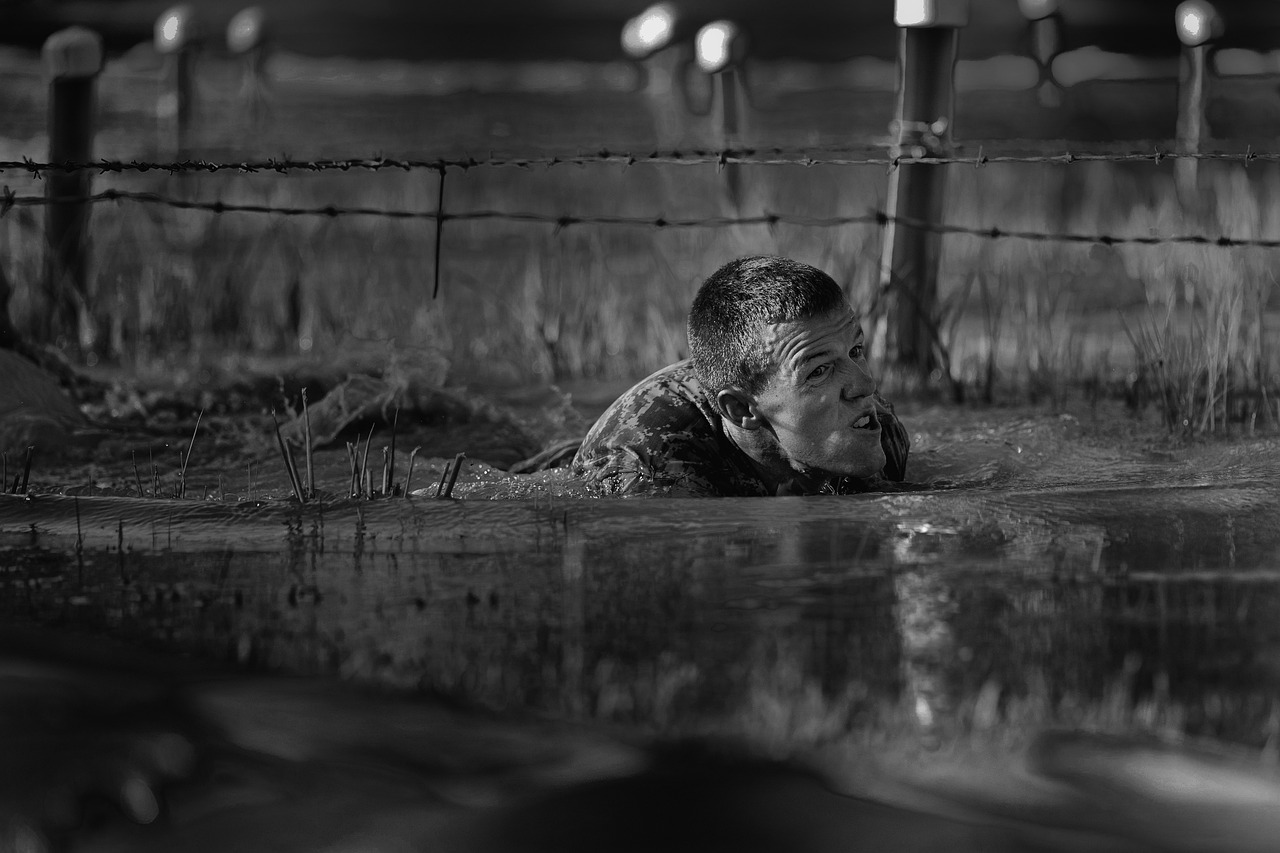
Realistic Scenarios for Practical Learning
When it comes to operational planning, real-world applications are essential for developing effective skills. Virtual reality (VR) brings this to the forefront by creating immersive environments that replicate real-life challenges and scenarios. Imagine stepping into a high-stakes situation where every decision you make could impact the outcome of a project. This is the power of VR in training—it allows learners to practice their skills in a safe, controlled setting without the fear of real-world repercussions.
One of the most significant advantages of using VR for practical learning is the ability to simulate complex scenarios that are often difficult to recreate in traditional training settings. For instance, consider a logistics company that needs to train its staff on managing supply chain disruptions. Through VR, trainees can experience a simulated crisis where they must navigate unexpected delays, resource shortages, and team communication challenges. This hands-on experience not only builds confidence but also enhances critical thinking and problem-solving skills.
Moreover, VR provides a platform for experiential learning, where learners can engage in active problem-solving rather than passively absorbing information. This approach is akin to learning to ride a bike; you can read all the manuals in the world, but until you hop on that bike and start pedaling, you won’t truly understand how to balance, steer, and navigate. In the same way, VR allows trainees to experiment with different strategies and see the immediate results of their decisions, fostering a deeper understanding of operational planning principles.
To illustrate the effectiveness of realistic scenarios in VR training, consider the following table that summarizes key components:
| Scenario Component | Benefits |
|---|---|
| Realistic Environment | Enhances engagement and retention of information |
| Dynamic Challenges | Promotes critical thinking and adaptability |
| Safe Practice Space | Encourages experimentation without real-world consequences |
| Immediate Feedback | Allows for quick adjustments and learning from mistakes |
As you can see, the integration of realistic scenarios in VR training not only makes the learning process more engaging but also significantly boosts the effectiveness of operational planning training. By immersing learners in these lifelike situations, organizations can ensure that their teams are better prepared to tackle challenges as they arise in the real world. This kind of practical learning experience is invaluable, as it equips individuals with the confidence and skills necessary to make informed decisions under pressure.
In conclusion, the ability to practice in realistic scenarios through VR is transforming the landscape of operational planning training. It bridges the gap between theory and practice, making learning both impactful and memorable. As organizations continue to embrace this technology, the potential for developing highly skilled operational planners is limitless.
- What is the primary benefit of using VR for operational planning training?
VR allows for immersive, hands-on experiences that replicate real-world scenarios, enhancing learning and retention. - Can VR training be customized for different industries?
Yes, VR training can be tailored to meet the specific needs and challenges of various industries, including healthcare, logistics, and manufacturing. - What challenges might organizations face when implementing VR training?
Some challenges include the cost of technology, the need for specialized training to use VR systems, and potential resistance to change from staff.

Feedback and Adaptation in Real-Time
Imagine stepping into a virtual world where every decision you make is met with immediate feedback. Sounds futuristic, right? Well, this is the reality that virtual reality (VR) brings to the table, especially in the realm of operational planning. The ability to receive real-time feedback is not just a luxury; it's a game-changer for skill development. In traditional training environments, learners often wait for evaluations that can take days or even weeks. However, with VR, the feedback loop is instantaneous, allowing individuals to understand the consequences of their actions almost immediately.
This immediate feedback mechanism fosters a culture of adaptability. When learners engage in VR simulations, they can experiment with different strategies and approaches, seeing firsthand what works and what doesn’t. For instance, if a participant makes a poor decision during a simulated operational scenario, they can quickly reassess their choices and try a different tactic without any real-world repercussions. This environment encourages risk-taking in a safe space, which is crucial for developing critical thinking and decision-making skills.
Furthermore, the adaptability aspect of VR training allows for a more personalized learning experience. Every learner is unique, and their pace of understanding varies. With VR, instructors can tailor feedback based on individual performance. For example, if a learner consistently struggles with resource allocation in a simulation, the VR system can provide targeted hints or suggestions to guide them toward a better solution. This level of customization is incredibly beneficial, as it addresses the specific needs of each learner, making the training process more effective.
Moreover, the real-time adaptation facilitated by VR extends beyond individual learning. Teams can also benefit from this dynamic feedback. When working on collaborative tasks in a virtual environment, team members can observe each other's decision-making processes and provide instant feedback. This not only enhances individual skills but also strengthens team communication and cohesion, which are vital in operational planning.
In summary, the integration of real-time feedback and adaptation in VR training significantly enhances the learning experience. It empowers learners to take risks, learn from their mistakes, and adapt their strategies on the fly. As organizations continue to embrace this innovative training method, the potential for improved operational planning skills becomes not just a possibility but a reality. The future of training is here, and it’s immersive!
- What is the main advantage of using VR for operational planning training?
VR provides immersive experiences that enhance engagement, allowing learners to practice in realistic scenarios with immediate feedback. - Can VR training be customized for different industries?
Absolutely! VR training can be tailored to meet the specific needs and challenges of various sectors, including healthcare, logistics, and manufacturing. - Are there any limitations to using VR in training?
While VR offers many benefits, challenges such as high initial costs, the need for technical expertise, and potential motion sickness must be considered. - How does real-time feedback improve learning outcomes?
Real-time feedback allows learners to quickly adapt their strategies, reinforcing effective decision-making and promoting a deeper understanding of operational planning concepts.

Collaboration in Virtual Environments
Collaboration is the backbone of any successful operational planning process, and when it comes to virtual environments, the possibilities are truly groundbreaking. Imagine a scenario where team members from different corners of the world can come together in a shared virtual space, working side by side in real-time, despite the physical distances that separate them. This is not just a dream; it's a reality made possible by virtual reality (VR) technology. By immersing users in a 3D environment, VR facilitates interactive teamwork that enhances communication and fosters a sense of unity among participants.
In these virtual spaces, teams can engage in dynamic discussions, brainstorm ideas, and visualize complex plans as if they were in the same room. This immersive experience can lead to a more profound understanding of the tasks at hand, as team members can manipulate visual elements and see the immediate impact of their decisions. For example, in a logistics planning scenario, a team could simulate the flow of goods through a virtual warehouse, allowing them to identify bottlenecks and optimize processes collaboratively.
Moreover, VR encourages a culture of open communication. Participants can share their thoughts and feedback in real-time, which is crucial for refining strategies and ensuring that everyone is on the same page. The sense of presence in VR makes it easier for team members to express their ideas and concerns, leading to richer discussions and more innovative solutions. Unlike traditional video conferencing, where distractions abound, VR can create a focused environment that promotes engagement and productivity.
However, collaboration in virtual environments does not come without its challenges. Technical issues, such as connectivity problems or hardware limitations, can hinder the experience. Organizations must ensure that all participants have access to the necessary technology and that they are trained to use it effectively. Additionally, some individuals may experience discomfort or disorientation in VR, which can affect their ability to collaborate efficiently. To mitigate these issues, companies should invest in proper training and support systems to help users adapt to this new way of working.
In conclusion, the potential for collaboration in virtual environments is immense, offering teams the chance to work together in ways that were previously unimaginable. By embracing VR technology, organizations can enhance their operational planning skills, improve communication, and foster a collaborative spirit that drives success. As we continue to explore the applications of VR, the future of teamwork looks brighter than ever.
- What is VR collaboration? VR collaboration refers to the ability of individuals to work together in a virtual environment, using VR technology to communicate, share ideas, and engage in joint tasks.
- How does VR improve teamwork? VR enhances teamwork by providing an immersive and interactive platform where team members can visualize projects, communicate effectively, and collaborate in real-time, regardless of their physical location.
- What are the challenges of using VR for collaboration? Some challenges include technical issues, user discomfort, and the need for proper training and support to ensure effective use of the technology.
- Can VR be used for remote teams? Absolutely! VR is particularly beneficial for remote teams, allowing them to connect and collaborate as if they were in the same room, thus bridging the gap created by distance.

Case Studies of VR Implementation
In recent years, various organizations have successfully integrated virtual reality (VR) into their operational planning training programs. These case studies not only highlight the effectiveness of VR but also provide valuable insights into how it can be tailored to meet specific industry needs. Let's explore a few notable examples that illustrate the transformative impact of VR on operational planning skills.
One fascinating case comes from the healthcare sector, where a leading hospital implemented a VR training program for its surgical teams. Surgeons were able to practice complex procedures in a risk-free environment, allowing them to refine their skills without jeopardizing patient safety. The immersive experience enabled them to visualize anatomy and practice their techniques repeatedly. Following the implementation of this program, the hospital reported a 30% reduction in surgical errors and a significant increase in overall team confidence during operations.
Another compelling example can be found in the logistics industry. A major shipping company adopted VR simulations to train its warehouse staff on operational procedures, including inventory management and emergency response protocols. By using VR, employees could engage in realistic scenarios that mimicked actual warehouse conditions. This hands-on experience not only improved their operational planning skills but also fostered a sense of camaraderie among team members. After just six months of training, the company noted a 25% increase in operational efficiency and a marked decrease in workplace accidents.
In the manufacturing sector, a prominent automotive manufacturer utilized VR to enhance its production line planning. Engineers and production managers collaborated in a virtual environment to design workflows and troubleshoot potential bottlenecks. The ability to visualize the entire production process in 3D allowed for quick adjustments and better decision-making. As a result, the company experienced a 15% decrease in production downtime and improved product quality, demonstrating the effectiveness of VR in operational planning.
These case studies underscore the versatility of VR across different industries. While the applications may vary, the core benefits remain consistent: enhanced engagement, realistic training scenarios, and improved decision-making capabilities. As organizations continue to explore the potential of VR, it is clear that this technology is poised to revolutionize operational planning training in the years to come.
- What industries can benefit from VR in operational planning?
Almost any industry, including healthcare, logistics, manufacturing, and even education, can benefit from VR training programs tailored to their operational needs. - How does VR improve learning outcomes?
VR enhances learning by providing immersive experiences that engage users, allowing them to practice in a safe environment and receive immediate feedback. - Are there any limitations to using VR for training?
While VR offers numerous benefits, challenges include high initial costs, the need for technical expertise, and potential issues with user acceptance and adaptation.
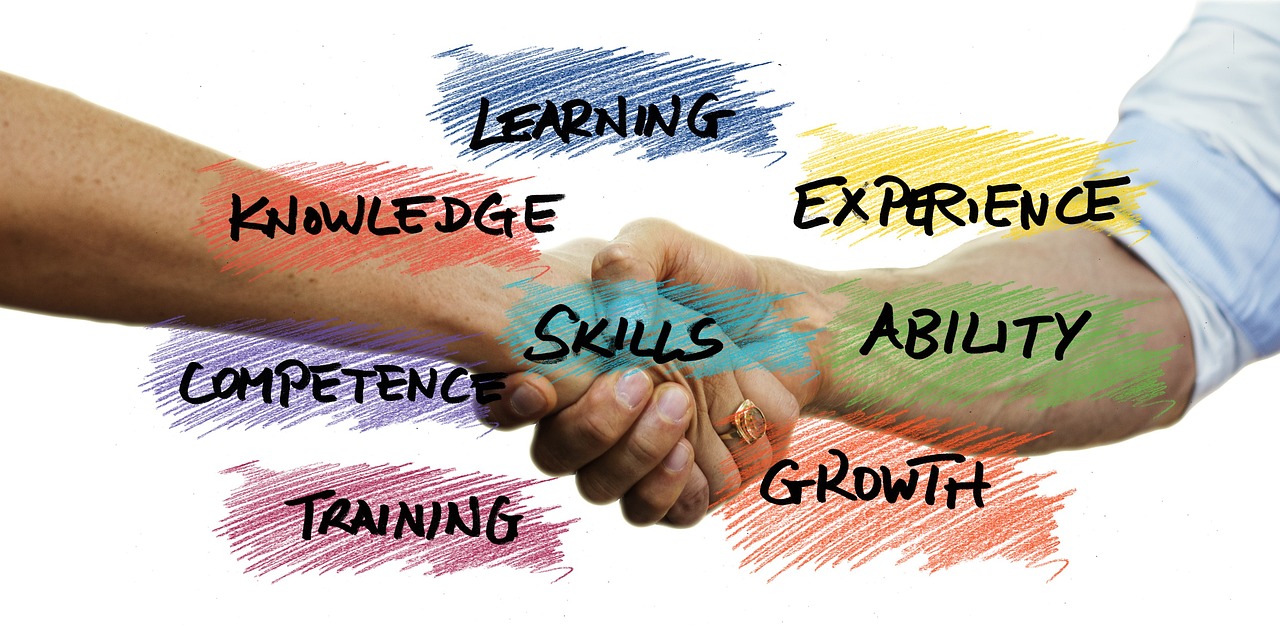
Industry-Specific Applications
Virtual reality (VR) is not just a buzzword; it's a game-changer across various industries, especially when it comes to enhancing operational planning skills. Each sector has its unique challenges, and VR has emerged as an innovative solution tailored to meet those specific needs. For instance, in the healthcare industry, VR simulations allow medical professionals to practice surgical procedures in a risk-free environment. Imagine a surgeon honing their skills on a virtual patient, where every incision and stitch can be practiced repeatedly without the fear of causing harm. This not only boosts their confidence but also sharpens their decision-making abilities in high-pressure situations.
Similarly, the logistics sector benefits immensely from VR applications. Here, operational planning involves intricate supply chain management and efficient resource allocation. VR can simulate various logistical scenarios, enabling teams to visualize the flow of goods and identify bottlenecks before they occur. Picture a warehouse manager navigating through a virtual environment, testing different layouts and workflows to find the most efficient setup. This hands-on experience fosters a deeper understanding of operational dynamics and enhances strategic planning.
In the manufacturing industry, VR plays a crucial role in training employees on complex machinery and assembly lines. Workers can engage in virtual training sessions where they interact with 3D models of equipment, learning to operate them safely and effectively. This immersive experience not only reduces the learning curve but also minimizes the risk of accidents. Moreover, it allows for the testing of various operational strategies, helping teams to refine their planning processes based on real-time feedback.
To illustrate the effectiveness of VR in these industries, let’s take a look at a table summarizing the key applications:
| Industry | Application | Benefits |
|---|---|---|
| Healthcare | Surgical Training | Risk-free practice, improved confidence, enhanced decision-making |
| Logistics | Supply Chain Management | Visualization of workflows, identification of bottlenecks, strategic planning |
| Manufacturing | Machinery Operation | Safe training, reduced learning curve, accident prevention |
These applications not only highlight the versatility of VR but also its capacity to transform traditional training methods into dynamic, engaging experiences. By utilizing VR, industries can cultivate a workforce that is not only skilled but also adept at navigating the complexities of operational planning. The immersive nature of VR allows employees to experience scenarios they might never encounter in a conventional training setting, making them better prepared for real-world challenges.
As organizations continue to explore the potential of VR, the possibilities seem endless. Whether it's through improving patient outcomes in healthcare, optimizing supply chains in logistics, or enhancing worker safety in manufacturing, the integration of VR into operational planning is paving the way for a more efficient and effective workforce.
Q1: How does VR training compare to traditional training methods?
A1: VR training offers a more immersive and engaging experience, allowing learners to practice in realistic scenarios without the risks associated with real-world training. This leads to better retention and application of skills.
Q2: What industries are most likely to benefit from VR training?
A2: While many industries can benefit, healthcare, logistics, and manufacturing are particularly well-suited for VR applications due to the complexity and safety concerns inherent in their operations.
Q3: Are there any downsides to using VR for training?
A3: Yes, challenges include the initial setup costs, the need for technical support, and potential discomfort for some users while using VR equipment. However, the long-term benefits often outweigh these challenges.

Challenges and Limitations of VR Training
While the integration of Virtual Reality (VR) in operational planning training has opened up new avenues for immersive learning, it is not without its challenges and limitations. One of the primary concerns is the cost of implementation. Setting up a VR training program can require significant financial investment, including the purchase of hardware, software, and the development of custom training scenarios. For many organizations, especially smaller ones, this initial outlay can be a daunting barrier to entry.
Another challenge lies in the technical expertise required to effectively implement and maintain VR systems. Organizations may need to invest in training personnel to use and troubleshoot VR equipment, which can further strain resources. Additionally, as technology evolves rapidly, keeping up with the latest advancements can be a continuous challenge, leading to potential obsolescence of existing systems.
Moreover, the physical space required for VR training can be a limitation. Unlike traditional training methods that can be conducted in a classroom or office setting, VR often requires a dedicated space that is free from obstacles to ensure a safe and effective training environment. This can be particularly problematic for organizations with limited real estate or those operating in smaller facilities.
Another notable limitation is the user experience. Not everyone responds well to VR technology; some individuals may experience discomfort or motion sickness during immersive simulations. This can hinder their ability to engage fully with the training, leading to inconsistent learning outcomes across participants. Additionally, the varying levels of technological proficiency among users can create disparities in how effectively individuals can utilize VR tools.
Furthermore, while VR provides realistic scenarios for practice, it may not fully replicate the complexities and unpredictability of real-world situations. Trainees might become overly reliant on the controlled environment of VR, which could lead to challenges when they encounter unexpected problems in actual operational settings. This disconnect can be a significant hurdle in developing true operational planning skills.
Lastly, organizations must consider the return on investment (ROI) of VR training programs. Measuring the effectiveness of VR training in terms of improved operational planning skills can be complex. Organizations need to establish metrics and evaluation processes to ensure that the benefits of VR training justify the costs involved. Without clear indicators of success, it can be challenging to justify the continued use of VR in training programs.
In summary, while VR training holds immense potential for enhancing operational planning skills, organizations must navigate a series of challenges and limitations. From financial implications to user experience and effectiveness in real-world applications, careful consideration is essential before diving into VR training initiatives.
- What are the main benefits of using VR in training? VR provides immersive experiences that enhance engagement and retention, allowing learners to practice in realistic scenarios without real-world consequences.
- How can organizations overcome the cost barrier of VR training? Organizations can explore partnerships or grants, start with smaller pilot programs, or invest in off-the-shelf VR training solutions to reduce initial costs.
- Is VR training suitable for all types of learners? While VR can engage many learners effectively, some individuals may experience discomfort or have varying levels of tech proficiency that can affect their experience.
- How do organizations measure the effectiveness of VR training? Organizations can establish metrics based on performance improvements, feedback from participants, and comparison of outcomes before and after VR training implementation.
Frequently Asked Questions
- What is operational planning?
Operational planning is the process of outlining the specific steps and actions that an organization must take to achieve its strategic goals. It involves detailing how resources will be allocated, timelines established, and responsibilities assigned to ensure that objectives are met efficiently.
- How does VR enhance operational planning skills?
VR enhances operational planning skills by providing immersive simulations that allow users to practice real-world scenarios in a risk-free environment. This hands-on experience fosters critical thinking, decision-making, and the ability to adapt strategies based on real-time feedback, all of which are essential for effective operational planning.
- What are the benefits of using VR for training?
The benefits of using VR for training include increased engagement and retention of information, as immersive experiences captivate users. Additionally, VR allows for realistic scenario practice, enabling learners to apply their skills in a safe setting while receiving immediate feedback to refine their approaches.
- Can VR training improve teamwork in operational planning?
Absolutely! VR training promotes collaboration by allowing team members to work together in virtual environments. This shared experience enhances communication skills and fosters a sense of teamwork, which is crucial for effective operational planning.
- What industries benefit from VR in operational planning?
Various industries benefit from VR in operational planning, including healthcare, logistics, and manufacturing. Each sector utilizes VR in unique ways to enhance training, improve decision-making, and streamline operational processes.
- Are there any challenges to implementing VR training?
Yes, while VR training offers numerous advantages, there are challenges such as the cost of technology, the need for specialized training to use VR tools, and potential resistance from employees who may be unfamiliar with the technology. Organizations must consider these factors when implementing VR solutions.





